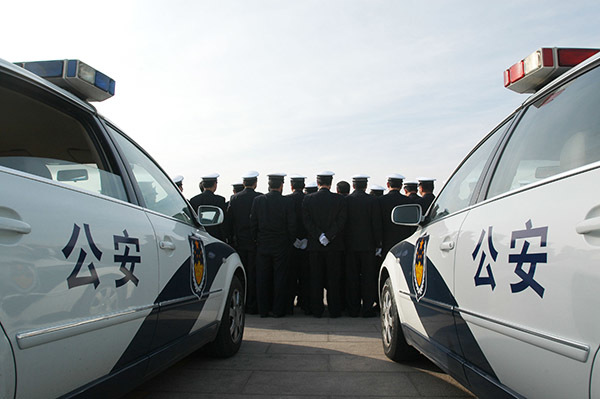Netizens traced a lead and zinc transportation station—Baiyin Nonferrous Group Changba Lead-Zinc Mine Tianshui Transfer Station—located only 2.5 km from the kindergarten involved. (Online image)
[People News] The mass lead poisoning incident at a kindergarten in Tianshui has shocked international observers. The official explanation—lead poisoning caused by the addition of decorative paint to pastries—has been met with widespread scepticism from parents and netizens. Even paint suppliers have denied responsibility. As netizens continue to investigate, the narrative keeps evolving. Who is truly responsible for the lead poisoning of these children? One major clue: the kindergarten was allegedly built on land formerly used by a chemical factory for dumping waste.
On July 8, a joint investigation team in Tianshui, Gansu Province, released a report on the blood lead anomaly among local children. According to police investigations, Zhu Moulin, principal and legal representative of Heshi Peixin Kindergarten, and investor Li Moufang approved the purchase of decorative paints via an online platform. The paint was diluted and used in some food preparation.
Many parents rejected the findings, questioning, “Kids only ate the pastries and corn sausage rolls once or twice a week. How could they be so severely poisoned?”
Others questioned the motive: why would a kindergarten use decorative paint in food?
Netizens with chemistry backgrounds pointed out that decorative paint has a strong irritant effect—young children likely wouldn't eat it. From a cost perspective, some also noted that decorative paint isn’t significantly cheaper than edible food colouring.
“If cost-saving wasn’t the motive, why would they buy more expensive paint instead of food-grade colouring?” one netizen asked.
Surveillance footage showing a staff member adding paint was also called into question. Netizens noticed time cuts in the footage, and the kitchen appeared unusually clean, leading many to suspect the video was staged overnight.

Netizens suspect the kindergarten faked the surveillance footage. (Online image)
Local residents also pointed out a chemical factory just 2–3 km away. Could that be the real source of the lead?
In fact, shortly after the incident, Professor Li Shuguang of Fudan University’s School of Public Health said lead poisoning typically results from long-term, high-level exposure. He questioned whether the tainted pastries were really to blame, and recommended checking for other contamination sources—like wastewater discharge, industrial waste, or ageing infrastructure. For example, old lead-containing pipes might leak lead into water.
Other netizens claimed the kindergarten was built on land previously used for chemical waste dumping—possibly a "contaminated site."
Recently, teachers who lived and ate with students at the kindergarten also tested positive for high blood lead levels. Some had results exceeding 500 μg/L, far above the adult reference level of 200 μg/L.
Even more puzzling, the media reported that several parents said their children brought food from home and didn’t eat at the school. If they didn’t eat the school's food, how did they still end up with lead poisoning? Was the lead really from the so-called "three-colour date cake" or corn sausage rolls?
Other netizens revealed that the land the kindergarten sits on was formerly used by the Baiyin Lead and Zinc Company to dump industrial waste. A few years ago, the government approved the site for building a kindergarten. Back in 2005–2006, over 600 nearby residents were reportedly poisoned, although official media only acknowledged 200 cases. It’s possible the same environmental issue has resurfaced, but the kindergarten is being used as a scapegoat.
They also noted that the principal owns several kindergartens—yet only this newly opened one experienced problems. "Think about it," one netizen said. "Baiyin Lead and Zinc is a state-owned enterprise."
Some recalled similar cases from a decade ago involving aluminium factories illegally dumping waste. Could this be another case of unauthorised industrial waste disposal? Netizens called for blood lead testing across the entire neighbourhood, suspecting the problem may be much more widespread.
One user compared the situation to the U.S. lead pipe crisis ten years ago, where national outrage followed after 2.5% of children exceeded 50 μg/L blood lead levels. “In Tianshui, levels are at 500 μg/L—that’s 10 times higher,” they said.
Maps show that the Baiyin Nonferrous Group Changba Lead-Zinc Mine Tianshui Transfer Station is located only 2.5 km from the kindergarten. The group is a state-owned enterprise overseen by the Gansu Provincial SASAC (State-owned Assets Supervision and Administration Commission). Netizens are now speculating that the true source may lie in water or environmental pollution from the nearby lead facility.
So far, authorities have not responded to public doubts. △










News magazine bootstrap themes!
I like this themes, fast loading and look profesional
Thank you Carlos!
You're welcome!
Please support me with give positive rating!
Yes Sure!